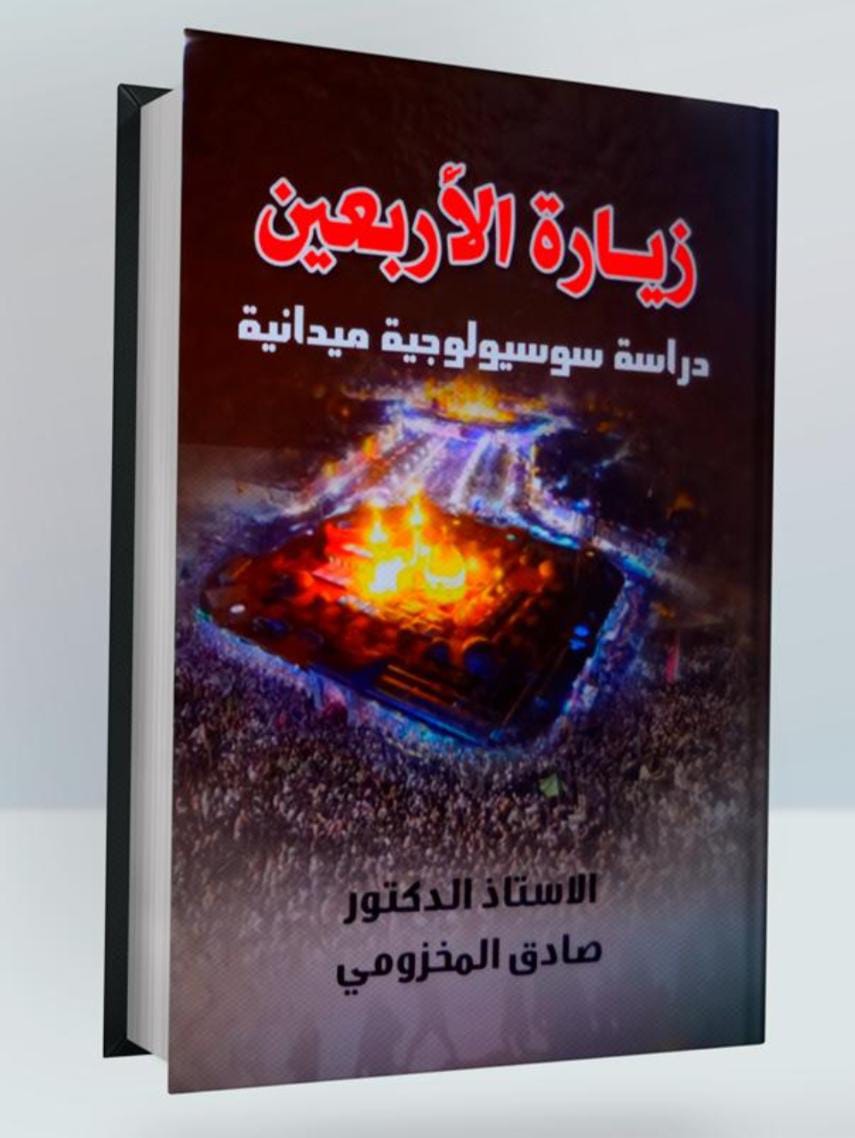The book deals with the Arbaeen Pilgrimage through sociology. This is considered one of the few studies that deals with the Husseini rituals and the Arbaeen Pilgrimage in an attempt to comprehend the biography of Imam Hussein and its accompanying effects on historical and social awareness.
The research topic is devoted to the Arbaeen pilgrimage, which is the largest human gathering in the world, as more than twenty million visitors visit Karbala, making it a phenomenon that dazzles the world. The first chapter explores the specificity of the Arbaeen pilgrimage , its historical development, and its ritual traditions. The second chapter addresses the growth of social and service traditions for visitors from the countryside and cities leading to Karbala, which have high dimensions in religiosity and morals. The third chapter shows the social effects of the Arbaeen pilgrimage among Iraqis and visitors from abroad through major fields of sociology such as the production of culture, social control, social upbringing, social interaction, and social personality. The fourth chapter presents a field study of the most important ways to visit Najaf-Karbala,during Arbain which is the research sample, in which service and mourning processions surround it as if they were letters written in a phrase covered in sadness and blackness, investigating the visitors of their inclinations and doctrines, and enabling a strategic study of the owners of the processions as actors in the neurolinguistic programming of the phenomenon. The researcher used four types of research methods in his study
• The historical method was adopted by the study to stand on the history of the pilgrimage , its origin and development. There is no doubt that studying social facts in the past sheds useful light on the present in an attempt to reach the social law that explains the facts of the consolidation of the pilgrimage and its growth
The descriptive analytical method The study relied on describing the phenomenon of the pilgrimage in terms of its subject and characteristics, analyzing the factors of its growth, and analyzing the symbols and traditions that constitute the cultural data to reach cognitive facts that explain the social reality
The method of comparison between the community of the pilgrimage in Islam, i.e. between the community of the visit in Karbala and the community of the visit in Mecca during Hajj and Umrah, and the comparison between the phenomenon of the Arbain in the past and the present, or a comparison between the Arbaeen pilgrimage and other occasions.
The field study method, as its approaches and directions establish the precise details of the terrain of the societal scene using the method of realistic observations.link
Dr. Sadiq Al-Makhzoumi

